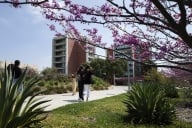You have /5 articles left.
Sign up for a free account or log in.
We have endured the most extraordinary spring semester, and soon summer, in the history of higher education. Remote teaching and learning have been implemented in incredibly short time frames of a few days to two weeks. Faculty developers, instructional designers and faculty themselves stepped up to make the best of the very difficult situation caused by the pandemic. It is testament to our commitment to the students that we have responded in this fashion. This has not been merely an American initiative -- higher education around the world has responded in similar fashion.
Recently, at the kind invitation of Abdullah Alwalidi, director at the Saudi Arabia National Center for e-Learning and the facilitation and moderation by Fahad Al Shahrani, general manager of academies at Human Resources Development Fund KSA, I had the most rewarding opportunity to engage hundreds of faculty members from Saudi Arabia in a webinar on the future of e-learning. We shared the same concerns about the impact of the virus on learning and our aspirations to offer enhanced learning opportunities in the future. Worldwide, the higher education challenges are the same: to become more resilient to disruption by disasters and more responsive to students and the workplace.
It is certain that this past semester and summer will bring about changes in the way we all deliver learning. We have learned that our delivery mode must be more resilient that our physical campuses can be. We have known that our campuses can be vulnerable to hurricanes, earthquakes and other natural disasters, but now we are acutely aware that “the way we have always done things” is vulnerable to epidemics. Wisely, we are considering ways we can be more resilient.
So, what are our options?
Certainly, we can offer more online classes. Though some early studies show that many students were disappointed with the hastily drawn remote teaching by faculty members inexperienced in distance teaching, there still seems to be a likelihood that students will appreciate the safety of that distance in the fall or until this epidemic is largely resolved. Michael Horn, co-founder of the Clayton Christensen Institute says, “I wouldn’t be surprised to see enrollment in residential college programs drop by roughly 10 percent or so in the fall, and revenue to fall around 20 percent if students won’t be able to attend in person in the fall,” Horn told CNBC Make It. “On the flip side, I think we will see enrollments in online programs rise quite a bit, driven by adult learners -- many of whom have been recently laid off -- looking to wait out the recession and use their time productively by skilling up.”
We can hedge our bets by offering more blended classes. By blending classes, we can mix both online and on-campus sessions. In the case of lab classes, some of the otherwise lecture or discussion sessions can be online while the labs can be scheduled on campus. In this way, if a second wave of the pandemic occurs or some other disaster hits, our students and faculty members are already prepared for online sessions. In this case, we can attempt to strategically schedule online sessions to minimize disruption.
One more option that is gaining traction is the “HyFlex” or “blendflex” model in which a course is built in both the online and face-to-face delivery mode. Experimentation with this model has gone on at a small scale across many universities over the past 15 years. Students may choose to attend as many online or on-campus sessions as they wish as the semester progresses.
“They can seamlessly at any time during the semester move back and forth within that course delivery,” said Carol Lee, director of educational technology at Central Georgia Technical College. The mode may have originated with Brian Beatty, now associate vice president for academic affairs operations at San Francisco State University, who called his new mode HyFlex when he conceived it in the mid-2000s. According to Beatty, approximately 20 institutions have experimented with variations on this learning mode.
Of course, this model requires faculty to, in effect, offer two concurrent sections -- one online and the other on campus. However, it gives the greatest flexibility to students and provides an instant response to an emergency that may close the campus. It is uncertain, of course, whether we will see a second wave of the pandemic or if we will see another widespread disaster of that scale and scope in the near future that may close campuses, but the possibility exists.
How is your university preparing for the fall? Are you ready for the next disaster that may close campus? Who is leading the initiative at your university to prepare for a better environment for transitioning classes for your students?





